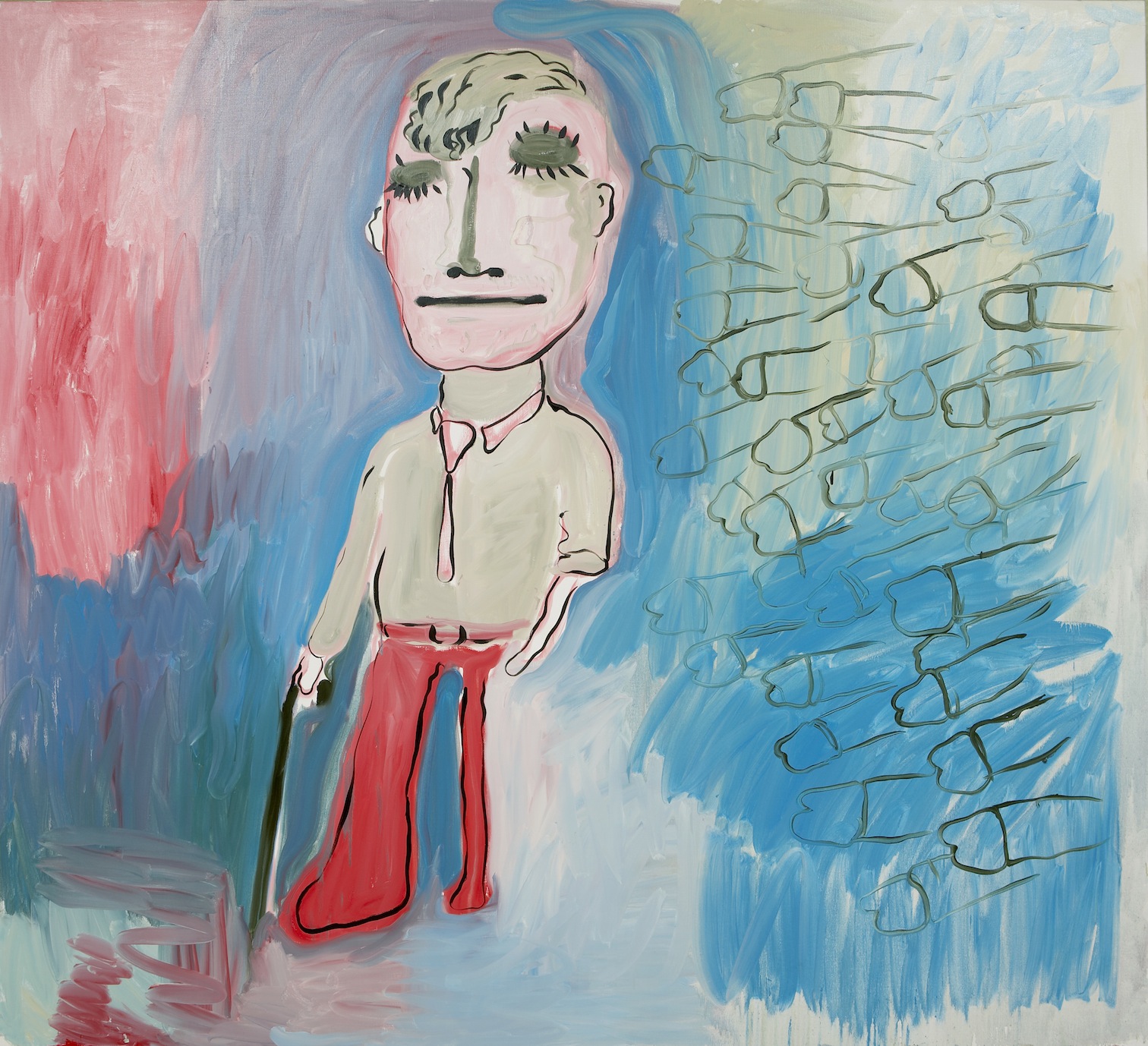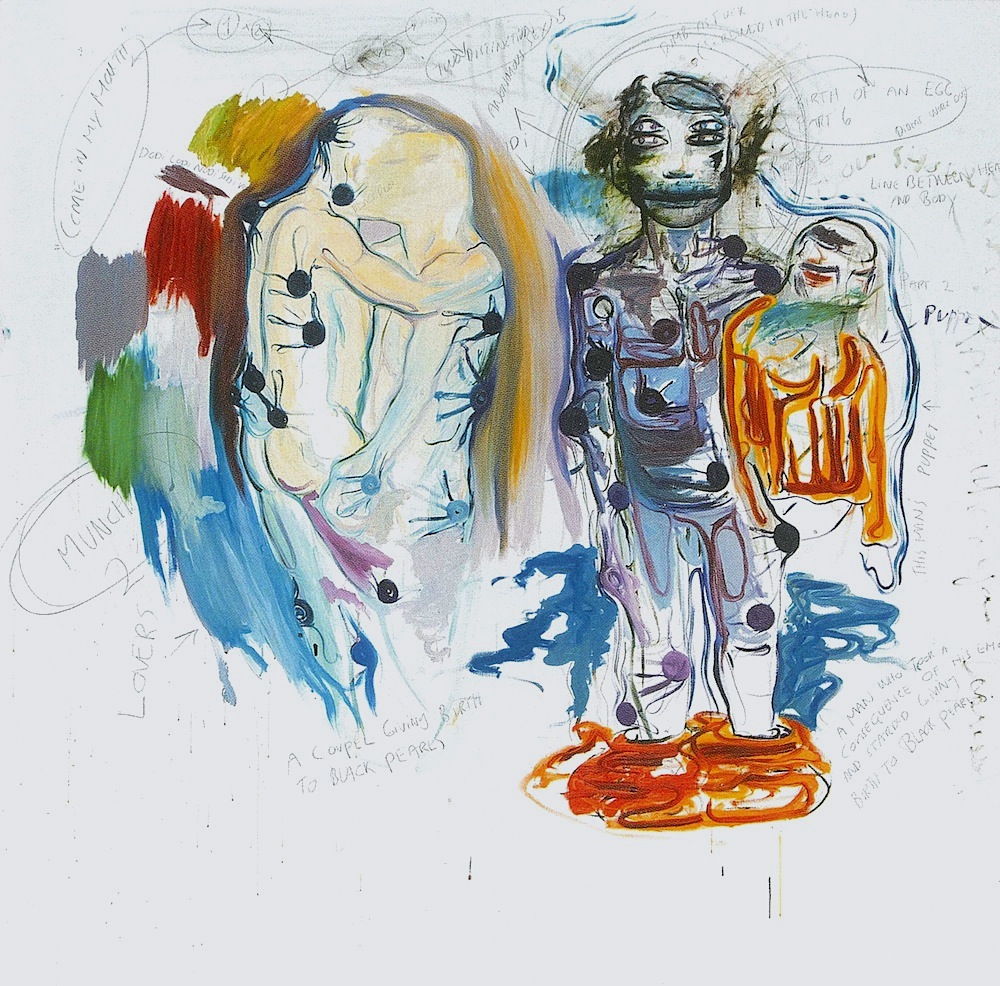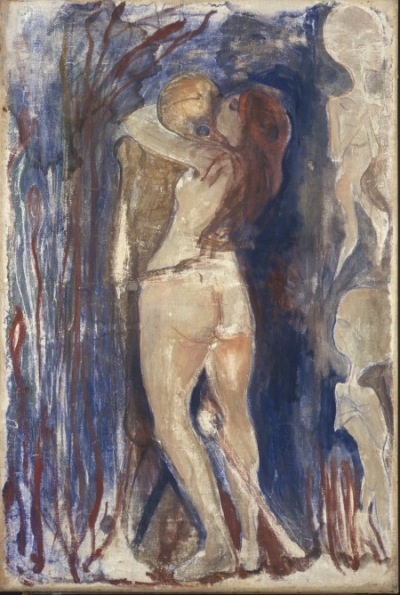
Bjarne Melgaard, Self Portrait, Image courtesy of the Munch Museum, © Bjarne Melgaard / BONO, Oslo 2014
In early 2015, a momentous exhibition titled MUNCH | MELGAARD: The end of it all has already happened, will open at the newly renovated Munch Museum in Oslo, Norway. The exhibition will partner the artwork of the revered Edvard Munch with contemporary Norwegian, New York based, artist, Bjarne Melgaard. Occupying six rooms of the museum, five have been curated while one has been left to the artist to do with as he see’s fit, even a mystery to museum Director Stein Olav Henrichsen. A first for the Munch Museum, the curators are taking a chance in merging the work of Edvard Munch with the visually boisterous Melgaard, who uses brash colors, organic forms and lots of blatant sexual imagery in his paintings and installations. The exhibition seeks to actively engage with the question; “What is the critical relevance of Edvard Munch to contemporary society?”
Edvard Munch (1863-1944) was a prolific artist who using the body in tandem with his own imaginative scenarios, made pictures that were both narrative, diaristic and at times, simply observational. Much of his artwork, highly personal, also exudes a particular breed of melancholia. Arguably, his most well-known painting is “The Scream” (1893-the subject also exists in works made in 1895, 1910) and it is through this quiet mask of hysteria, where the two artists, collide. If in the press release, it stated that Bjarne Melgaard was indeed the great-grandson of the late painter, I’m sure that no one would bat an eye. It would make perfect sense, for one artist so interested in the chaotic portrayal of life to yield another with a similar agenda. It could be said that Melgaard, is inventing his own language through the visualization of frenetic symbolism . However, where Munch’s artwork was ripe with sexual repression, Megaard delves into the precarious and permeation of pornography and the role of the body in our society in strict contrast to Munch’s overwrought sexual repression. Strictly observationally, each artist has worked within the confines of two-dimensional surface (also Melgaard’s video projection) but where Munch diligently sought to hone his painterly craft, Melgaard uses a variety of solutions, a subsequent negation of artistry that is prominent in contemporary art.

Bjarne Melgaard, Untitled, 1997, mixed media, Image Courtesy of the Munch Museum, © Bjarne Melgaard / BONO, Oslo 2014
Opening January 24th and closing April 12th, 2015, MUNCH | MELGAARD: The end of it all has already happened, promises to ignite the age old dialogue about people today and as to what extent we were and are still extracting truths from ghosts of the past who still float among us.
For more on THe Munch Museum, visit: http://www.munchmuseet.no
The exhibition is organized by the Munch Museum with Lars Toft-Eriksen as curator in close collaboration with Bjarne Melgaard.
More soon.
xo

